


| [ Previous ] [ Next ] |

|
A leisurely drive south-east from the Richardson cemetery brought us across Lake Marion (manmade, on the site of what was once the High Hills of the Santee) and down the interstate to Charleston. Before driving into the city itself, we toured Middleton Place and Drayton Hall, two of the beautiful old plantation estates along the Ashley River. Both pre-date the Revolution and were seats of considerable political power at that time.
Middleton Place was another filming location used in The Patriot. It provided the terraced gardens seen in Lord Cornwallis's interrupted garden party. During the Revolution it was the home of Henry Middleton, an early colonial activist who retired from politics and lived out most of the war as a nominal neutral.
| Henry Middleton started the spectacular gardens which are the plantation's modern claim to fame. The grounds are a maze of walkways, terraces, arbors and reflecting pools such as this one. Unfortunately, we managed to visit at a between time -- the magnolias and azaleas were already past their bloom, and the summer flowers hadn't yet started. Even at an "off" time of year, though, the grounds are glorious. |
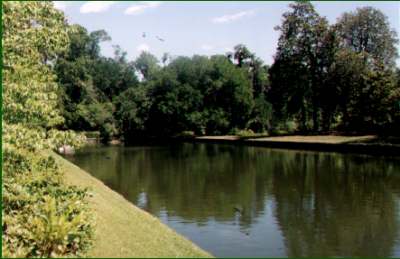
|
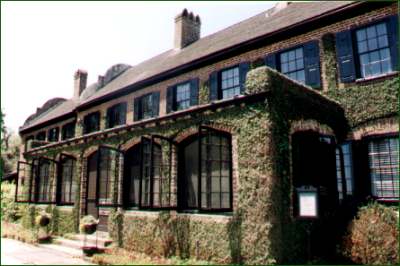
| The plantation house was burned during the Civil War. Only this building -- which I have seen variously identified as a wing of the original mansion or a guest house -- survives. |
| The building in this photo is the old plantation spring house -- sort of an outdoor refrigerator, which used water to cool foods and dairy products -- near another of the network of pools around the grounds. |
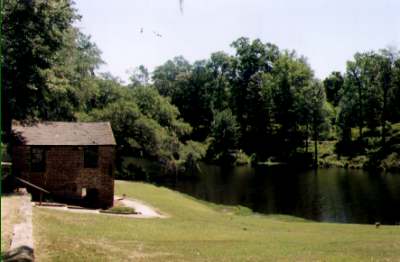
|
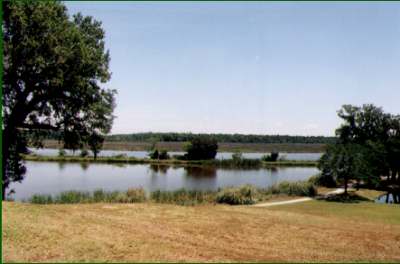
| The gardens face onto the water -- either the Ashley itself, or a tributary, I'm not sure -- with a view across an expanse of rice fields. This was taken from a point overlooking the top of the stepped terraces shown in The Patriot (which are best seen in an aerial photograph, I discovered). |
|
A mile or so down the road from Middleton Place is Drayton Hall, one of the
few grand Georgian plantation houses to survive both the Revolution and the
Civil War. If you could put the two of them together, you'd get a
perfect tourist site, for Drayton Hall sits in grand isolation at the center
of open, largely unlandscaped grounds. During the Revolution, the house
belonged to William Drayton, a disaffected Royal privy councilor who joined
the rebellion and eventually the Continental Congress.
After Sir Henry Clinton returned to New York, Cornwallis set up his headquarters here while he attempted to restore civil government to South Carolina. Banastre may not have slept here -- assuming Banastre ever actually slept, period -- but he no doubt spent a good many waking hours on the premises. |
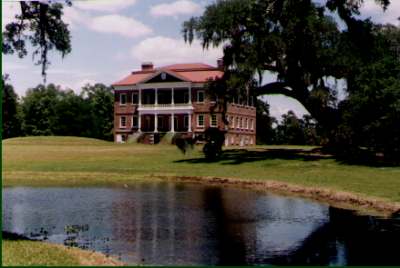
|
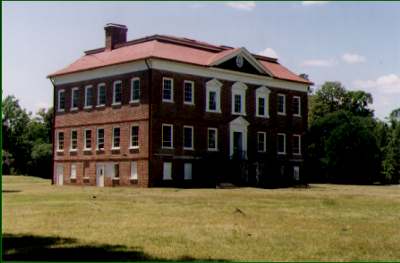
| Modern visitors, who approach the house from the other side, tend to think of this as the "back" of the structure. But in colonial times, this side, which faces the river, was its front. In those days, the Ashley was the local highway. |
| The interior of Drayton Hall is original, but unfurnished and unrestored. This interesting little gate closes off one of the entrances to the housekeeping area in the "basement" which is actually built above ground. |
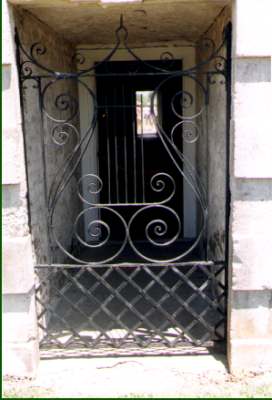
|
From Drayton Hall, we continued on into Charleston itself.
| [ Index ] | [ Previous ] [ Next ] |
| Return to the Main Page | Last updated by the Webmaster on January 30, 2004 |